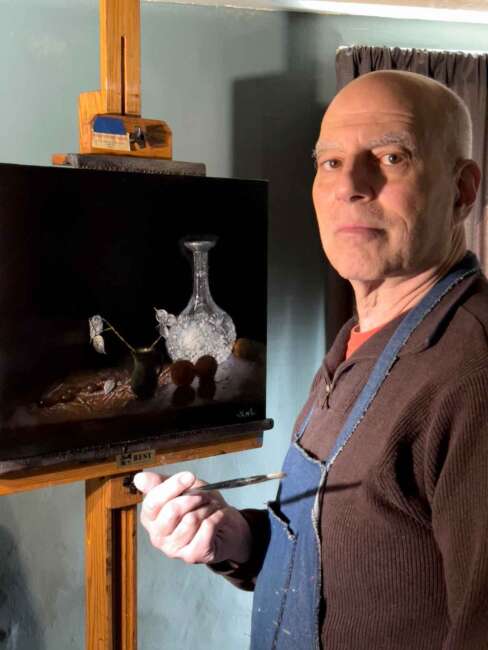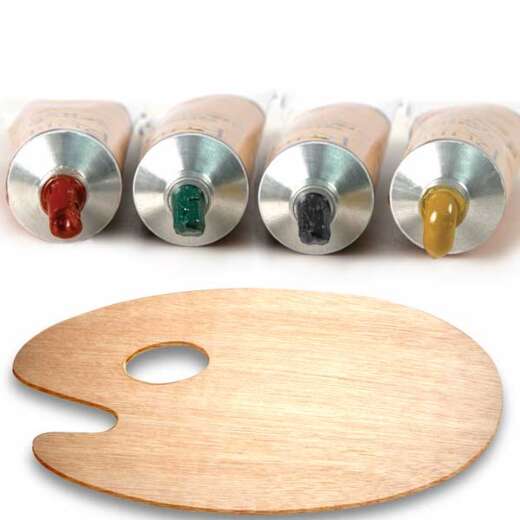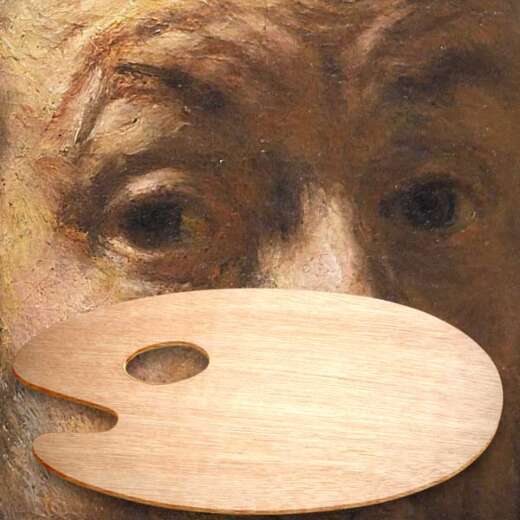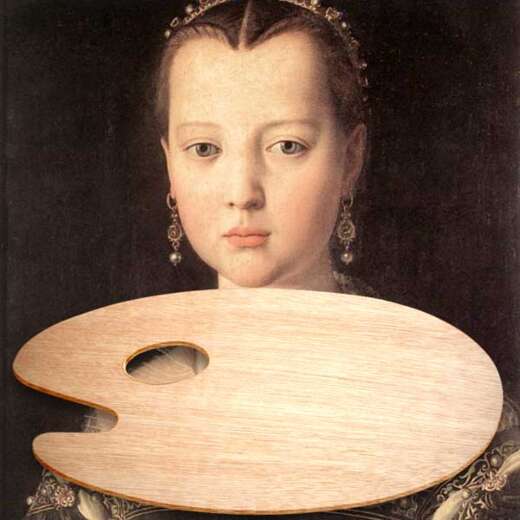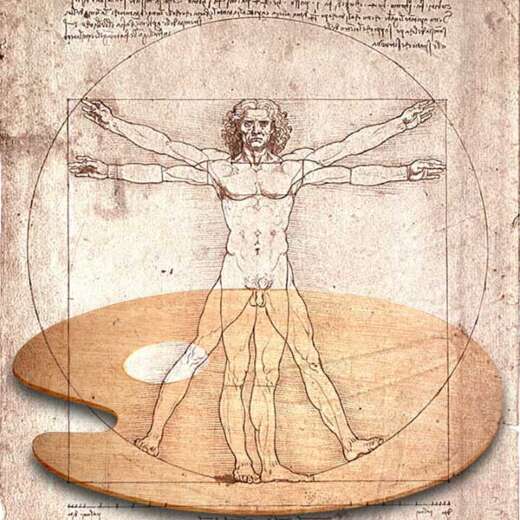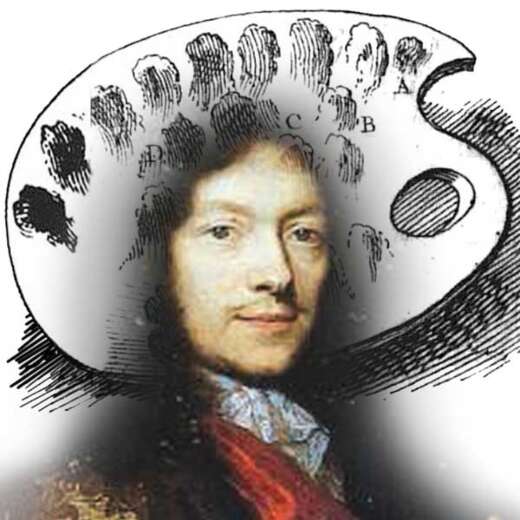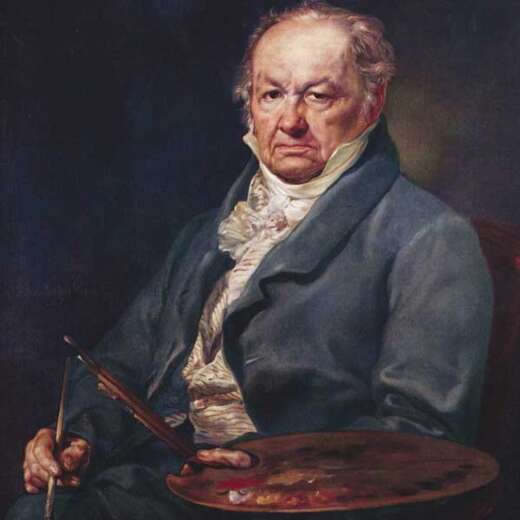A Rational Approach to Color Palettes

The palette is one of the most essential tools in the history of oil painting and its affect is one of the most minor studied aspects in art history. The method of setting the palette has a significant history, and its development is relatively easy to trace in pictures of artists at work. The use of a set, limited palette, a portable surface upon which colors are arranged according to their tonal value, and its implications in painting is the subject of a lecture by George O’Hanlon, Technical Director of Natural Pigments. This is the introduction to the lecture. The entire lecture can be viewed on the Painting Best Practices website.

Initial D. A man with bowls of colored paint from the Omne Bonum, an encyclopedia by Jacobus, British Library MS Roy 6E VI, vol. ii, folio 329r.
The is no clear evidence of use of the palette in Antiquity or the Middle Ages. Most depictions of medieval painters at work show pigments in shallow shells or saucers, often with a wide range of colors, such as the tints in the nine saucers of a fourteenth-century English encyclopedia.

Marcia, painter, miniature from Boccaccio's Livre des femmes nobles et Renommées (De Claris Mulieribus).
The earliest depictions of palettes are in the hands of women painters, such as those depicted in Boccaccio’s book Famous Women of around 1400. It is impossible to determine what medium they were using, but the palette in these pictures suggest oil medium. The colors on the palette of the painter in these illustrations certainly has the viscosity of oil paint, which can remain stiff on a flat palette or in place on an inclined surface, such as the one depicted in the self-portrait of the painter named Marcia.
It is interesting to note the shells of colors on the table next to the painter. Oil colors were ground fresh and placed in shells to be used immediately or when needed for a later time in pig’s bladders and tied closed with string.
The earliest description of palettes in the accounts of the Dukes of Burgundy in the late 1460s describes them as ‘trenchers of wood for them to put oil colors and to hold them in the hand.’

Engraving of a portrait of Hans Bol (1534-1593), Flemish artist.
During the fifteenth century, there were few references to palettes in literature and the representations are likewise few. All depictions of palettes in the 1500s were of northern European artists, such as in this engraving of Hans Bol.
In Bol’s portrait, we see a palette that resembles palettes today with its familiar kidney bean shape, thumbhole and indent allowing the artist to hold brushes in the same hand holding the palette. It appears that pure colors are placed all over the palette.
Throughout the sixteenth century, palettes depicted in engravings and in paintings of artists were small and held few colors.

VAN HEMESSEN, Caterina, Self-Portrait, 1548, oil on panel, 32 x 25 cm, Öffentliche Kunstsammlung, Basle.
Interestingly, there is no indication of mixing in the palette between each pile of paint in portraits of artists during this time period. Just as we find in this self-portrait of Caterina van Hemessen, the color arrangement does not appear in any order.
Cennino Cennini, the author of the famous fifteenth century painting manual, provides a clue as to why we see small palettes with few colors on them depicted in these pictures of artists at work. In his treatise, he instructs how to prepare three tones to paint flesh, with the addition of red to add touches to the cheeks and lips.
According to Cennini, a green underlayer was first laid in over the ground, but this underpainting did not serve as part of the modeling: “Take a little terre-verte and a little white lead, well tempered; and lay two coats all over the face, over the hands, over the feet, and over the nudes.” [1] The flesh tones were applied over this underpainting, laying in the darker tones and achieving three-dimensionality by highlighting in the lightest areas: “...make three values of flesh color, each lighter than the other laying each flesh color in its place on the areas of the face.” [2] The flesh tones were pre-mixed in a system of three gradations. These corresponded to the three divisions or modeling in planes of light typical of the late medieval period and early Renaissance. He further describes preparing colors for other passages in a painting, such as clothing or draperies. These were also painted in a series of three basic tones.
It is evident from Cennini’s descriptions that he instructs the setting with a palette of local colors. In other words, a palette of colors for painting a specific passage, such as flesh, draperies, clothing or background. Although Cennini was describing the preparation of tempera colors, it is logical that artists employing the relatively new oil medium would use the same methods for preparing colors. This is precisely what we find in fifteenth and sixteenth century oil paintings.

MANUEL DEUTSCH, Niklaus, Saint Luke Painting the Virgin, 1515, egg tempera on wood, 117 x 82 cm, Kunstmuseum, Bern.
One of the most interesting depictions of an artist at work is the panel of Saint Luke painting the Virgin by the Swiss painter Niklaus Manuel Deutsch. In this sixteenth century painting, Saint Luke uses a small and limited palette for painting the blue cloak of the Virgin.
A limited set of colors covers a significant part of the palette; white, several shades of blue and red-brown. The reddish-brown color was often used as an underpainting for blue. We also find the tints of blue similarly described by Cennini for painting draperies: “If you want to do blue, that is, for drapery, neither wholly modeled with lights nor all just laid in flat, take some of the three or four divisions of ultramarine blue: for you will find various grades of it, one lighter than another.” [3] The setting of the palette with colors on the edge, and a large bare area is an indication of mixing. Technical analyses of the painting show that Manuel used complex color mixtures in a medium of oil and probably emulsion.

Detail of palette of Saint Luke Painting the Virgin.
In the background of the painting, his assistant prepares a more extensive palette of colors, perhaps one for painting flesh, arranged in tonal value from white to black. In this painting, we see the use of the palette for mixing colors rapidly developing in the sixteenth century.
References
1. Cennino d'Andrea Cennini, The Craftsman's Handbook: "Il libro dell' Arte", Daniel Varney Thompson, Editor, Translator. Dover Publications, 1954, p. 93.
2. Ibid., p. 94.
3. Ibid., p. 93.



